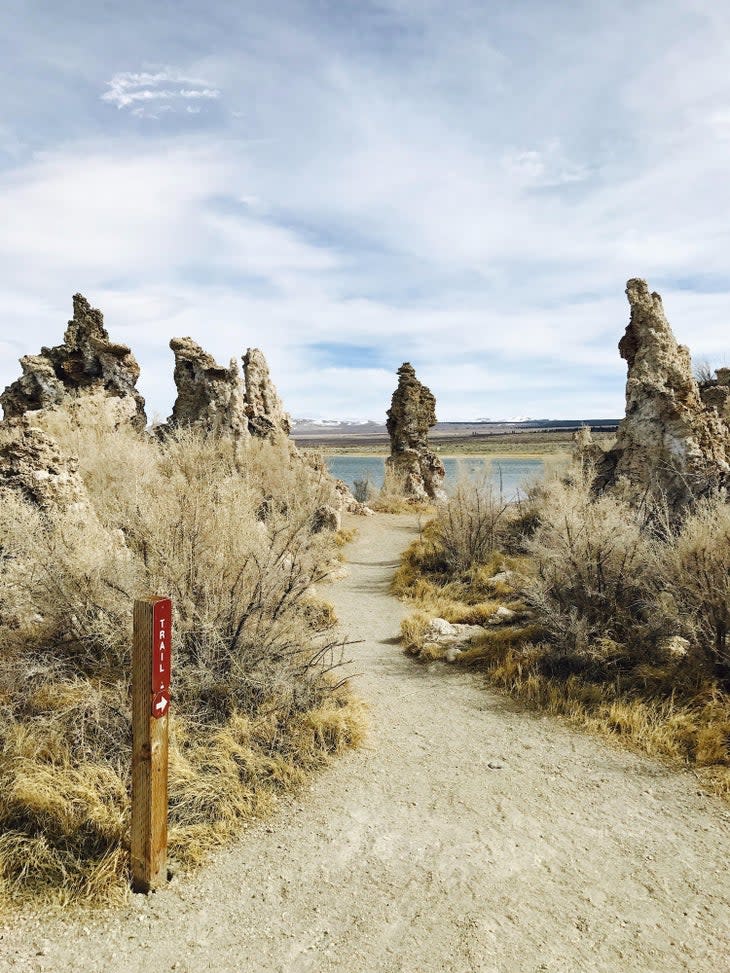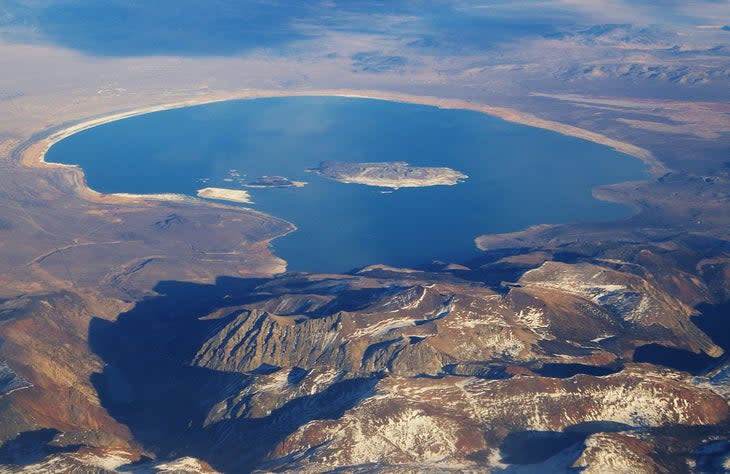The Dignity of Risk
This article originally appeared on Trail Runner
This article is featured in the Summer 2022 print issue of Trail Runner.
The Fastest Known Time website boasts four completed records around California's Mono Lake, all unsupported. To date, no women have finished.
In May, 2021, I tried to become the first.
If I succeeded in running around the lake - Kuutzagwae, to the Indigenous Kutzaduka native to the basin - it would have been my first record-breaking run. Instead, just a few miles from the finish, I spent an hour in the shade of my friend's pickup, begging her to help me bail, demanding that she drive me to the ice cream parlor in town.
"Jessica," I yelped, my voice tinny and desperate. "I think I'm going to have a heat stroke." Still, Jessica pressed me, insisting that we carry on as planned, with them pacing me for the final stretch. "No," I said, "I'm not well. I think I might die if I continue."
It was less than 24 hours after I had impulsively decided that I wanted to attempt the route. For starters, I had not been training to run 42 miles around a lake. Secondly, I was 21 months into recovery from a traumatic brain injury, where a bike crash had crushed nerves in my neck and ribs. My brain was so rattled by whiplash that it would never be the same.
I had become unrecognizable to myself. Whatever cognitive ability may have once enabled an accurate sense of my capacity had been snuffed out by the concussion.
For nearly two years I believed that coming anywhere near my physical limit would lead me to certain death. My autonomic nervous system was so dysregulated that my heart rate would, on occasion, soar to 190 BPM, where it remained for hours.
Layered onto these symptoms was my blind fear of them, a vicious cycle of disorientation compounded by panic at my own disorientation. It made me dizzy. It made my vision dilate to a pinhole of light beyond which the world was blurry, jagged, and dark. My mind failed me, and I learned to let it.
And so, I made a home in that failure. I stopped cycling, stopped skiing, stopped climbing, stopped gathering to laugh or cry or merrymake with my friends.
But then I started to run.

TAKING A CHANCE
For years, I had relied on cross-trained strength and stubbornness to eke out an ultra each summer, without doing more than a single preparatory jog. Now, all I could muster was a 20-minute mile - more of a careening shuffle than a run.
Weeks passed. My pace quickened. Suddenly, I found myself running every day, whenever my symptoms were subtle enough for me to leave bed without wanting to vomit. And so was it any wonder that, late into the afternoon and on the last day of a trip home to Eastern California, as my car careened down Highway 395 and Mono Lake came into view, I thought:
Maybe I could run around that lake tomorrow?
I thought of the four people ever to have been known to complete the unofficial ultra. I was lucky to have a good friend among them. Screw it, I thought.
I texted Jessica, What do you think?
They responded immediately: Want me to crew?
RELATED: From Dramatic Brain Injury to 100 Miles
Mono Lake began to be diverted in the 1940s, to send water 338 miles south to Los Angeles. As the city expanded, the lake quickly became unrecognizable. By 1991, the lake's volume had been reduced by half, while its salinity doubled, and the surrounding basin was plagued by frequent toxic dust storms. That year, California's Water Board legally mandated that water diversions cease until the lake levels were restored to 6391 feet. In the three intervening decades, the lake level has never been that high.
The route that now circumnavigates the lake drops dangerously close to the waterline. At its lowest point, the GPX track Jessica sent me dipped to 6,384 feet, just six feet above the lake level recorded that May. If, before 1940, someone tried to run around the lake, four miles of this new route would have been twenty feet underwater.
Several miles would have traversed dark, wet sand, sloppy to run in and stinking of salt. Instead, the shoreline is now flaky, shimmering from heat. Alkali flies leap and stagger, their bodies so small that 2,000 of them could squeeze side-by-side onto a single postcard.

THE ATTEMPT
I was not yet fully well. In the pre-dawn light, shivering in the visitor center parking lot and squinting at the map on my phone, the letters on the screen seemed to float away like twigs on a stream. In this state, in spite of any reasonable person's sense of how to live a life, I started to run - albeit after three false starts as I returned to my car for my forgotten sunglasses, forgotten snacks, forgotten poles.
Six miles in, I arrived at the first of the route's many natural springs. The morning was gooey with yellow light. I plunged my hands into the spring, and the world clattered into pixel-level precision. Burbling water ran over my hands. I gasped at the texture of my skin as it magnified and contracted in the rivulets. New details seemed to explode into being for the very first time. I could not remember life that wasn't a vertiginous blur. Now, the fine-grain texture of the moment stunned me and broke my heart.
I could feel the space of possibility around my perceived self widen.
Oh. I can do this.
Ecstatic, I jumped back on my feet. I ran my way into a lucidity beyond what I had resigned myself to hope for. Severe concussions, like mine, permanently damage nerves in the brain. I could not simply think my way back to a selfhood that felt familiar. Still, I yearned for it. I wanted what I could not remember with a force of desire that far exceeded any of the other fleshy hungers I have known in my life. I could feel myself crossing a threshold, back into the dignity of risk. My body was still the same body. The will to do impossible things was not a thread that had snapped. When it came, the runner's high only amplified my frenzied joy.
It lasted for eighteen miles.
Then, there were dunes. They stretched to the horizon, interrupted only by a herd of wild horses. If I had spent any amount of time preparing, I would have known: there are more than ten miles of jeep track, barely carved into silky, white sand. I might have remembered, too, that several miles near the end of the route had burned the summer before. Where sagebrush was once as tall as trees, now there wasn't any cover.
My pace dropped to a stagger and then a drag. I contemplated wrapping my body around the trunk of some dead thing. I heard once that more than 100 species of land plants could be sensitive to the type of increased radiation that is associated with ozone depletion. As I slowed to a sun-drunk sputter, I wondered whether I was one of those thin-skinned plants.
I kept going. I felt hastened by the realization that I shared with this landscape of disintegration. As I ran, I wondered how long a place can sustain its status on the brink of irreversible change before we understand that threshold has been crossed. The lake is twelve feet below the level science insists must be sustained if we want to avoid ecological catastrophe. It has been that way for eighty years.
We both knew a thing or two about collapsing, about carrying on.
After 34 miles, I arrived at Navy Beach and tore my shoes off. I decided that I would not complete the route. Back in the parking lot, I threw a fit to my friends who had come to pace me, wanting to see me through the last eight miles to cross the finish line. But little did they know, in some way, I already had.
Astra Lincoln is a multi-sport athlete and a writer of the west. She holds a Master's of Science in Environmental Studies from the University of Victoria. Early in 2022, her post-concussion syndrome finally resolved.
For exclusive access to all of our fitness, gear, adventure, and travel stories, plus discounts on trips, events, and gear, sign up for Outside+ today.

